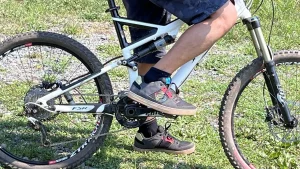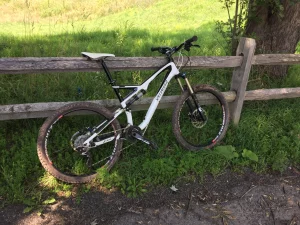Poseidon X – FAQ

My earlier post – A riders’ guide to the Poseidon X gravel bike – had covered my experience in how I got the bike, my first impressions, and the updated and changes I made to suit my style of riding. I had received some follow-up questions which I thought was important enough to share as a separate post. Here I try to answer these questions. I hope to keep updating this post, so make sure to book mark this page to refer to whenever you want.
Table of Contents
Q. Why Does My Headset Wobble when Riding?
A. The headset assembly of the Poseidon X (or any recently made bike) consists of a variety of parts shows in this diagram. When the headset wobbles the primary reason is that the headset cover (the top-most part) is not tightened properly. Even if it is tightened according to manufacturer’s torque specification (do no exceed this specification since over-torque can crack or break the headset cover) the various parts are not fully seated, thus creating gaps resulting in the wobble under movement when riding.
To fix the wobble, I suggest the following steps:
- Keep the bike on the floor and get across the bike where are standing standing across the top tube.
- With the bike (or just front wheels if on a stand) on the ground wiggle the handlebar to notice how much movement there is in the headset.
- Loosen the screw holding the headset cover and remove the cover and the long screw.
- Slowly wiggle to loosen the fork at the bottom of the headset by lifting the headtube a little bit. This is to give all the parts a chance to settle into their positions within the head tube. There is no need to remove the entire fork completely for minor adjustments like this.
- Once the fork is loose, slowly push down on the head tube into the fork. This would enable all the other parts to align together “sit” in its position so that there is almost no gap between them
- Once you get a feel that all the parts are tight and “locked”, keep the headtube pushed down slightly to makes sure no gap forms while you put the headset cover and screw back in place.
- Tighten the headset screw to the torque limit. With the bike still on the ground, wiggle the headtube to see if this solved the problem.
- If no further adjustments are needed, tighten the headset screw to the torque limit.

If the above steps did not solve the problem, you might need to change some of the parts within the headset. The ball bearing might need to be replaced or the washers might have worn out. These require a professional service, so take it to a bike shop to identify and fix the problem.
Q. Can You Replace the Poseidon-X Brakes?
A. The Poseidon X’s stock mechanical disc brakes are not something to be happy about. The Tektro brakes look good on paper, but underwhelms when used on the trails. There are issues with the brake cables mainly, but even the pads and rotors could be upgraded.
Brake Cable:
The cheapest option is to change the Jagwire brake cables. I made a video on how to change the front cables and rear brake cables. Check them out.
For most riders the Jagwire cables with its compression-less housing seems to solve the issue. If this does not satisfy your braking needs, you have an option to chance the brake caliper and/ or the rotors.
Calipers:
Some riders upgraded to a mechanical-hydraulic disc brakes that falls between the full mechanical and full hydraulic set-ups. This is a self-containing hydraulic system at the caliper, with the mechanical cable pulling the hydraulic pistons.
Juin Tech seems to be the best performing of all hydraulic caliper brakes. It’s a simple and direct swap of the stock calipers with the Juin Tech calipers and can be done in a few minutes.
Full Hydraulic:
Full hydraulic brakes like those found on mountain bikes are relatively expensive for drop bar bikes. A good hydraulic disc brake system such as Shimano’s Ultegra or GRX series are very good with exceptional stopping power, but your individual budgets might differ because of the price for drop-bar disc brake systems.

Q. Does the Bike Click When Riding?
A. The clicking sound you hear from your bike when pedaling could be caused by a few things –
- Poorly lubricated chain – In this case, you can apply, spray, or lube the chain and the rollers with cycle chain oil, grease or wax.
- Derailleur pulleys – these tend to accumulate dirt and wont move as easily. So a cleaning of the derailleur periodically can help, especially if your regular riders are on mud/ grave/ off road with a lot of debris flying around.
- Cassette cogs – the chain pulls the bike through the rear cogs. The space between the cogs can accumulate dirt and sand and can add to the clicking/ creaking sound when the chain rubs against it. Again, a cleaning of the cogs, especially between them could help with the sound and also prolong the life of these components.
- Pedals – if you have flat pedals, make sure the pedals are secured through the screws into the crank arms all the way. If you have clip-less pedals, check to see if the clip-in areas are not overly loose or tight, which could add to any clicking sound under load when riding.
- Bottom bracket – The bottom bracket supports the cranks that pedaling possible. Sometimes the bottom bracket attachments can get lose and this can cause clicking noise when pedaling. So make sure the bottom bracket is secured tightly with no movement.
- Seat-post – Your seat post and seats can also be a cause for the clicking sound. Your torso moves with each pedal stroke. This puts a lateral movement on the seat and on the seat post. Make sure the seats are tightened onto the seat post on the rails under the seat. And also ensure the seat post is properly tightened to the seat tube. This should prevent any clicking sound.
In general, periodic cleaning of your bike ever other week or even more frequently if riding in harsh conditions is recommended. The components are exposed to the elements and designed to work in a variety of conditions. But accumulation of dust, rocks, sand, etc. can wear down the components faster. Also washing the bike takes you closer to these components and you can address any issues such in the components such as as cracks, chips, or uneven gear changes to prevent expensive parts replacement.
I hope you found this useful. Check out my other cycling and Tips and Solutions posts as well.
One comment
Leave a ReplyCancel Reply
This site uses Akismet to reduce spam. Learn how your comment data is processed.





[…] bikers usually wear bike shorts that resemble regular cargo shorts. Gravel bike riders also don’t wear spandex and prefer to be more aligned to what mountain bikers wear. Even […]